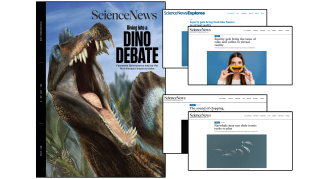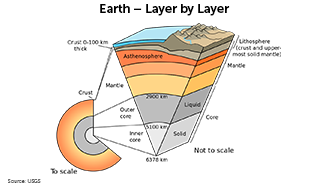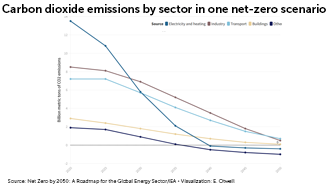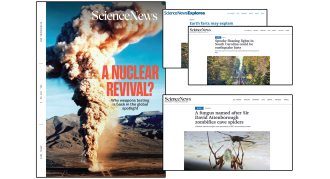Search Results

Types of Research Design and VR Taste
Pair these lesson plans with articles from the May issue of Science News to have students compare observational and experimental study designs and propose their own research topic for one of them, and explore how scientists are developing taste-mimicking virtual-reality (VR) technology.
Technically tasty
Virtual reality (VR) has expanded people's ability to experience visual and auditory sensations in virtual worlds. What about our other senses? Learn how chemical-detection capabilities of the tongue allow us to taste cake as being sweet and lemonade as being sour. Explore how scientists used this understanding to develop taste-mimicking VR technology, all while answering questions about how this tasty research might one day help people.
Observations vs. Experiments: Two types of research design
In this lesson, students will compare and contrast observational studies with experimental studies and practice identifying the study types from provided examples. Then, they will apply that knowledge to two studies outlined in Science News articles. As an optional assignment, students will be asked to create an example of a possible study.

Earth and its many layers
To really understand Earth, you need to travel thousands of kilometers beneath our feet. Starting at the center, Earth is composed of four distinct layers.

How Eyelashes Wick Water and Present-Day Dinosaurs
Check out these lesson plans paired to articles from the May issue of Science News Explores to learn how eyelashes’ properties and structure help them repel water from eyes and use examples of fossils to explore the evolutionary relationship between birds and dinosaurs.
Present day dinos
By studying fossils, scientists have nailed down the evolutionary connection between birds and dinosaurs. Students will consider how changes to the way some species are now classified highlight the evolutionary relationship between birds and dinosaurs. This guide also will discuss evidence for this relationship using an example fossil.
An eyelash of elegant design
Raindrops might fall on your head, but thanks to your eyelashes, they rarely drip into your eyes. Learn how the simple, elegant design of our eyelashes flicks away water. Answer questions about diverse functions of body hair, all while discussing the value of analogies as a literary device used to improve understanding of unfamiliar concepts.

Trends in alcohol-induced death rates
Alcohol-related deaths have increased yearly over the last 20 years. From 2019 to 2020, in the first year of the COVID-19 pandemic, the death rate from alcohol use rose sharply — at a much greater rate than in recent years.

The race to net zero
Drastic cuts to greenhouse emissions are needed to prevent even more catastrophic consequences than the rising sea levels, extreme weather and other impacts our warming world has already faced. Scientists have mapped out potential paths to net-zero, when greenhouse gases emitted are balanced by those removed. This includes decreases in emissions from transportation, industry and other sectors.

Spooky Lights and Ecological Relationship Types
Review types of ecological relationships among organisms then have students identify which relationship type matches different examples of organism pairs and learn how geology might explain the existence of ghostly blue lights that have been haunting a small town.
Friends and foes: Exploring symbiosis and predation in nature
Have students explore ecological relationships among organisms through a case study on a newly identified fungus named after biologist Sir David Attenborough that zombifies spiders — taking over their bodies before killing them. Students will compare and contrast commensalism, mutualism, parasitism and predation and then use the definitions to identify examples.
The case of the haunted railroad
Strange ghostly blue lights have haunted the little town of Summerville, S.C. for decades. Reports of spectral balls of light floating along a desolate stretch of railroad inspired a ghostly local legend. Learn how legends can inspire real-world science. Then discuss similarities and differences between scientific theory and legend while answering questions about a proposed geologic explanation for this phenomenon.